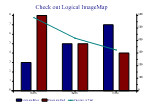| Automated charting and reporting |
SharpPlot Tutorials
General Tutorials
Chart Samples
Style Examples
SharpLeaf Tutorials
Document Layout Tutorials
Text Flow Tutorials
Table Tutorials
Visual Glossaries
SharpPlot Class
SharpPlot Properties
SharpPlot Methods
SharpPlot Structures
SharpPlot Enumerations
SharpLeaf Reference
SharpLeaf Class
SharpLeaf Properties
SharpLeaf Methods
Table Class
Table Properties
Table Methods
SharpLeaf Structures
FontType Structure
ParagraphStyle Structure
BoxStyle Structure
SharpLeaf Enumerations
DocumentLayout Classes
DocumentLayout Class
PageLayout Class
PageElement Abstract Class
Frame : PageElement Class
TextBlock : PageElement Class
ImageBlock : PageElement Class
Box : PageElement Class
Rule : PageElement Class
Common Reference
Document Class
VectorMath Class
DbUtil Class
Download
Release Notes
Licensing
SharpPlot Reference > PageMap Class
PageMap Class
The PageMap class allows the programmer to explore hotspot data contained in any chart to reproduce the typical behaviour of a VML graphic deployed by a web-server.
public class PageMap
A PageMap object is obtained by the SharpPlot.RenderPageMap method.

This utility class is designed to permit an application to convert mouse-tracking information into references back to the original data from which the chart was created.
This may be used (for example) to eliminate outliers from a regression analysis or to implement data editing by allowing the user to drag markers or bars. The examples all refer to this simple chart, which has 2 data series (one with bars and one with markers) and also has a tip on the heading text.
The hotspot detail is always returned in a HotspotInfo structure which tells you all you need to know to implement a graphical enquiry or editing application.
See PageMap Introduction for a fuller description and a simple worked example.
PageMap Instance Properties
| Height | Height of paper in user’s units (ReadOnly) |
| Scale | User’s units relative to points (ReadOnly) |
| Width | Width of paper in user’s units (ReadOnly) |
PageMap Methods
| AxesToPoints | Convert Axis co-ordinates to absolute points |
| EnumerateCharts | List all charts found on this page |
| FindChart | Report the name of the chart at these (x,y) co-ordinates |
| FindHint | Recover hint text given hotspot handle |
| FindHotspot | Find the details of any data points on this page at given (x,y) location |
| FindHyperlink | Recover link text given hotspot handle |
| FindInfo | Find the details of any standard chart object(s) given chartid and target |
| FindPoints | Locate all data points whose centres lie within given bounding box |
| FindScriptValue | Recover saved script value from hotspot |
| FindTip | Recover tip text given hotspot details |
| GetHotspotInfo | Return hotspot detail as a structure |
| GetTracker | Convert points to status message giving formatted x and y in user-space |
| PointsToAxes | Convert points to axis co-ordinates, defaulting to topmost chart |
Requirements
Namespace: Causeway
Assembly: SharpPlot (in sharpplot.dll)